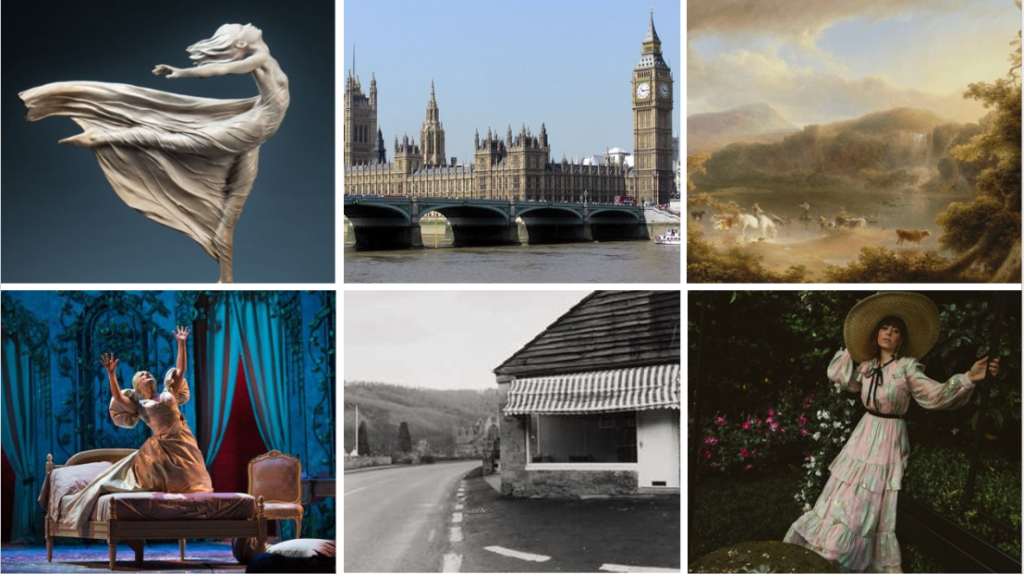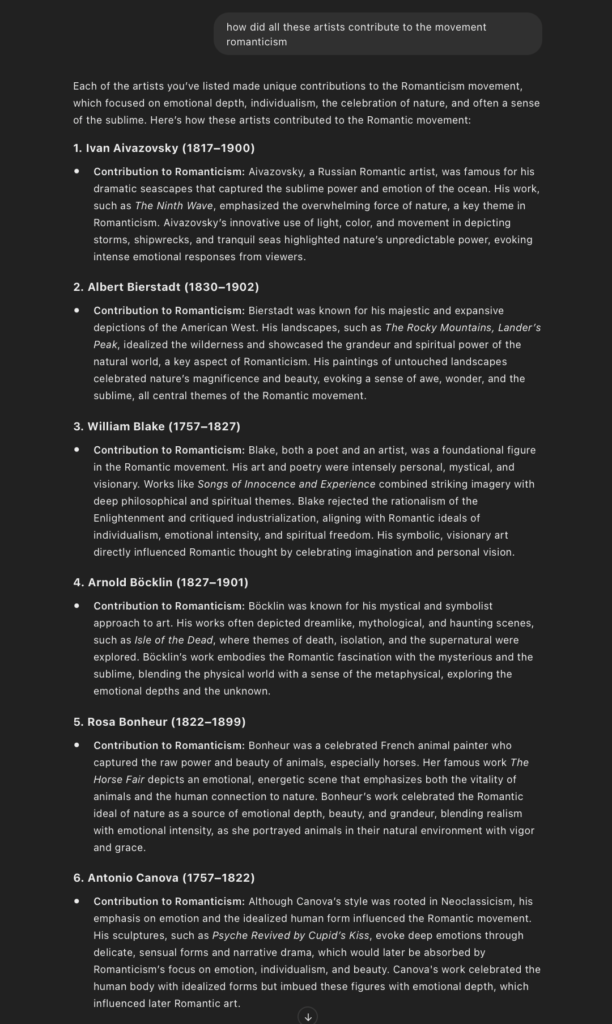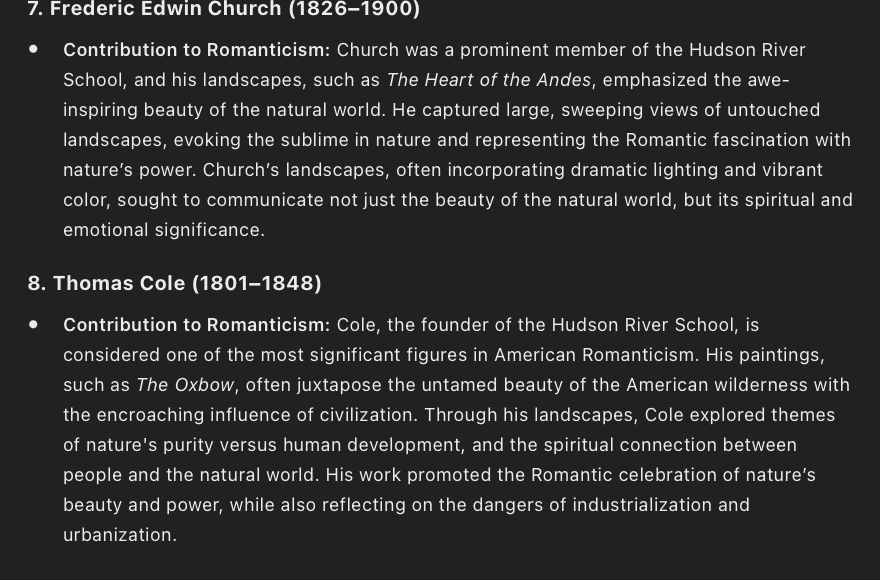Romanticism: A perspective characterised by works like literature painting, criticism, architecture, music, and historiography from the late 18th to the mid-19th century.
With the tendency of it being portrayed as a landscape with a “moody” atmosphere. Romanticism is more subjective especially the subjectivity of the artist feelings rather than an objective like concept which remains as a record for the observable world.
Examples: (referring to romanticism in other art forms)

Definition of sublime and picturesque
Sublime: the understanding of the quality of greatness that brings out wonder and awe. From the 17th century, the idea and the feelings it inspired have helped been a type of source of creativity for writers and artists especially in terms of natural landscape.
Picturesque: an aware influence of Nature which creates foregrounds, middle grounds, and backgrounds which can help highlight a number of provocative formal elements.
Who was involved in the movement:
1. Ivan Aivazovsky (1817–1900)
Contribution to Romanticism: He was a Russian Romantic artist, who was famous for his extraordinary and dramatic seascapes which captured the power that sublime holds and emotion that the ocean brings. His work, like The Ninth Wave, connected with the incredible force of nature, which is a key theme in Romanticism. His innovative use of colour, light, and movement in depicting storms, tranquil seas and shipwrecks, brought out nature’s uncertain power, provoking intense and emotional responses from viewers.
2. Albert Bierstadt (1830–1902)
Contribution to Romanticism: This artist was known for his unreal and expansive illustrations of the American West. His work mostly consisted of landscapes and one of his most famous works was, The Rocky Mountains, Lander’s Peak, influenced by the wilderness and spiritual power of the natural world, which is also a key feature of Romanticism.
3. William Blake (1757–1827)
Contribution to Romanticism: Blake, who was an incredible poet and artist, was a fundamental figure in the Romantic movement. His art and poetry was often personal, visionary and mystical. His pieces like Songs of Innocence and Experience allowed this combination of striking imagery alongside deep spiritual and philosophical themes.
4. Arnold Böcklin (1827–1901)
Contribution to Romanticism: This artist was known for his symbolist and mystical approach to art. His works regularly showed dreamlike and haunting like scenes, such as Isle of the Dead, where there was themes of death, supernatural and isolation explored. Böcklin’s work embodied the Romantic attraction with the mysterious and sublime.
5. Rosa Bonheur (1822–1899)
Contribution to Romanticism: Bonheur was French animal painter who seized the raw power and beauty of animals, especially horses. She was famous for her work The Horse Fair which portrayed an emotional and energetic scene which highlighted both the vitality of animals and the human connection to nature.
6. Antonio Canova (1757–1822)
Contribution to Romanticism: Although Canova’s work was classed as Neoclassicism, his highlight in emotion and the romanticised human form shaped the Romantic movement. His sculptures, like Psyche Revived by Cupid’s Kiss, trigger deep emotions using sensual forms and narrative drama, which would in the future be absorbed by Romanticisms attention on emotion, beauty and individualism.
7. Frederic Edwin Church (1826–1900)
Contribution to Romanticism: Church was a member of the Hudson River School, and he produced landscapes, like The Heart of the Andes, which stressed the inspiring beauty of the natural world. He often captured large and sweeping views of untouched landscapes, promoting the sublime in nature and portraying the romantic fascination towards nature’s power.
8. Thomas Cole (1801–1848)
Contribution to Romanticism: Cole, founder of the Hudson River School, is considered to be one of the most meaningful, figures in American Romanticism. His paintings, like The Oxbow, regularly juxtapose the wild beauty of the American wilderness with the invading idea of civilization. Using his landscapes, Cole investigated themes like nature’s purity vs human development. His work celebrated the romantic celebration of nature’s beauty and power, but he also reflected the dangers of industrialization and urbanization. He was way ahead of his time.
Reference: ChatGBT


